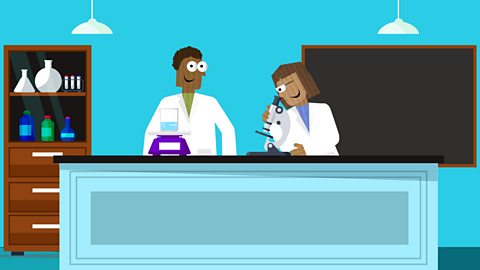How do ecosystems work?
An ecosystem is a natural environment where everything interacts to support life.
Ecosystems are made up of living ÔÇô or biotic ÔÇô organisms, like plants and animals;which rely on nonliving ÔÇô or abiotic ÔÇô things, like the sun and the weather,to survive and thrive.
There are lots of different ecosystems on Earth:including desert ecosystems;forest ecosystems;and tundra ecosystems.
But all can be contained within three main categories:terrestrial ecosystems on land;freshwater ecosystems in rivers and lakes;and ocean water ecosystems at sea.
Take a look out of your window.
What kind of ecosystem do you see?
What are the living, or biotic, organisms present?
What are the nonliving, or abiotic, things?
How do they all interact with each other?
In an ecosystem, everything is interconnected.
Producers are plants that get their energy from the light of the sun ÔÇô and nutrients from the soil ÔÇô to make their own food.
Consumers get their energy by eating plants.
Primary consumers like rabbits and sheep are herbivores ÔÇô so they get their energy by eating vegetation.
Secondary consumers, like hedgehogs, can be omnivores, who eat plants and animals,or carnivores, who only eat animals.
Decomposers, like worms and beetles, feed on decaying plant and animal life.
When they do, they release healthy nutrients and gasses into the soil and the air,which supports more growth and sustains the circle of life.
Ecosystems are delicately balanced ÔÇô so a small change can have a large impact.
Coral reefs are some of the most complex and diverse ecosystems on the planet.
TheyÔÇÖre made up of coral polyps, which are living things,that provide food and shelter for thousands of other organisms.
But coral ecosystems can be damaged by humans dredging for fish,or completely destroyed by rising sea temperatures caused by global warming.
Ecosystems constantly evolve due to changes caused by humans and nature.
But not all changes that occur are bad.
Humans are beginning to make intentional changes to benefit ecosystems.
TheyÔÇÖre planting more trees to provide homes for animals.
TheyÔÇÖre clearing rivers, lakes and seas of human waste that can harm habitats and living things.
And theyÔÇÖre passing laws that make it illegal for people to damage existing ecosystems ÔÇô so that future generations can enjoy them too.
You can learn more about how ecosystems work by creating an ecosystem in a bottle.
Start by finding a used bottle or jar.
Fill it with soil and plant seeds ÔÇô then give it a good shake.
Add some water and secure the top of the bottle to keep it airtight.
Now place the bottle in a warm place and, in a journal, describe the changes that occur over time.
What do you notice about how everything interacts with each other?
Video summary
This short animated film explores how ecosystems work.
An ecosystem is a natural environment in which animals, plants and organisms work to support life.
This film explains the difference between biotic and abiotic, terrestrial, freshwater and ocean water ecosystems and the importance weather has on the conditions of many different ecosystems.
This short film is from the ┤¾¤¾┤½├¢ Teach series Explain, Explore, Expand.
Teacher Notes
Explain
What is an ecosystem and how do the living and non-living things within an ecosystem interact?
LetÔÇÖs explore ecosystems and discover how, all over planet Earth, biotic and abiotic things interact.
Key Facts
- All living things need energy to feed, grow, move and reproduce.
- An ecosystem is a diverse group of living animals and organisms that live in communities interacting with each other and a specific environment in a dynamic manner.
- Ecosystems are complex made up of living (biotic) and non-living things (abiotic) forming delicately balanced and interdependent communities.
- Living things consist of three main groups:
- Producers
- Consumers
- Decomposers
- Some examples of producers are plants (vegetation), lichens and algae.
- Plants absorb light energy and carbon dioxide from the air through sunlight and through combining this with water and soil nutrients to make their own food Photosynthesis.
- Primary consumers only eat vegetation and are called herbivores (Vegetarians).
- Example: sheep, rabbits and cows.These herbivores are also prey(food).
- Secondary consumers get their energy from primary producers and are either omnivores or carnivores; consuming either plants, animals or both.
- Examples: Chickens, Robins and Hedgehogs, also prey.
- Those that eat both are called omnivores.
- UK examples are: Stoat, Badger and wildcat.
- Carnivores are meat eaters.
- Decomposers. These feed on decaying and dead plant and animal material to release nutrients into the soil and gases into the air._
- Fungi as well as insects such as worms and beetles.
- Abiotic Factors: Non-living elements of an ecosystem.
- Includes the water and soil chemistry, as well as nutrient cycles, the temperature, terrain and the amount of sunlight.
- Ecosystems are constantly changing.
- The plants and animals as well as the environment are continually adapting to changes caused by the plants, animals, humans and nature.
- This video references damage caused to Coral Reefs. Further information can be found here:
Explore
Where to pause?
- 00:51 - pause the video. Ask students to identify biotic and non-biotic elements of the environment outside the classroom and have a guess at the creatures that live there.
- 02:38 - pause the video. Ask students to discuss why picking flowers is a bad thing and what laws they would pass to help an ecosystem.
Activities / Experiments
- Activity 1: Draw up a food web of local creatures to see how they are connected.
- Activity 2: Making a difference Helping hedgehogs
- You could learn more about hedgehogs, making them a home and how they live.
- Speak to your parents and neighbours and get permission to create a Hedgehog highway between gardens.
Fun Facts
- Rewilding: Just by adding one species we change an ecosystem, for the benefit of animals and humans. Here is a project to re-engineer the land through the introduction of Bison to the UK.
Expand
Discussion questions:
- Is a pond an ecosystem and why?
- How does the life cycle of one creature impact on its prey or one of its predators?
- Do ecosystems always remain the same?
- Does all human activity have to be destructive?
- Can we make changes to the environment that will improve opportunities for all animals?
- What changes do we see to show us that animals are adapting to urban life?
Other Videos:
Learning Objectives:
- Explore the components that make up an ecosystem and discover how plants, animals and microorganisms are all interdependent on each other.
National Curriculum objectives:
England: Describe the differences in the life cycles of a mammal, an amphibian, an insect and a bird.
Scotland: Describes how energy flows between plants and animals in more complex food chains and webs and ecosystems, using vocabulary such as ÔÇÿproducersÔÇÖ, ÔÇÿconsumersÔÇÖ and ÔÇÿherbivore'.
Northern Ireland: Explore the interdependence of people, plants, animals and place.
Wales 2020: I can recognise that what I do, and the things I use, can have an impact on my environment _and on living things. I can explore relationships between living things, their habitats and their life cycles.
This builds on key stage 1 food chains and (Year 4, England) construct and interpret a variety of food chains, identifying producers, predators and prey.
Non Statutory: Pupils might work scientifically by: Observing and comparing the life cycles of plants and animals in their local environment with other plants and animals around the world (in the rainforest, in the oceans, in desert areas and in prehistoric times), asking pertinent questions and suggesting reasons for similarities and differences.
Sources:
How are shadows made? video
What are shadows? How are they made? What factors affect their size and shape? LetÔÇÖs explore shadows in more detail ÔÇô and learn how to turn your shadow into a clock!

Changing environments. video
This film explains how important environments are, what factors can change the conditions of different environments and how that can affect the things living in them.
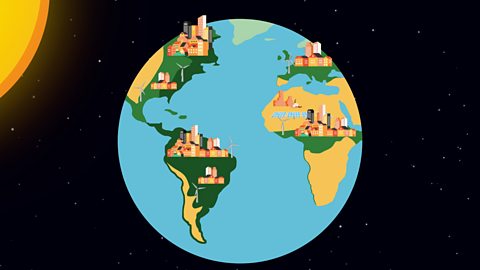
What is inheritance? video
This film explains how inheritance works in humans, animals and plants, and explores how humans use inheritance to their advantage, to produce animals and plants that are more productive.
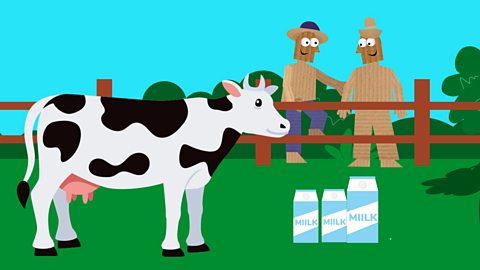
What are air and water resistance? video
This film explains the difference between water and air resistance and demonstrates examples of how resistance plays a part in our everyday life.
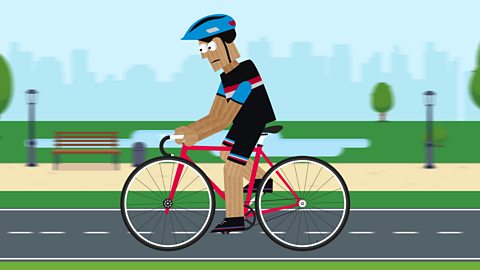
Day and night. video
This film explores the difference between day and night and demonstrates how the rotation of the earth's axis contributes to making seasons such as summer and winter.
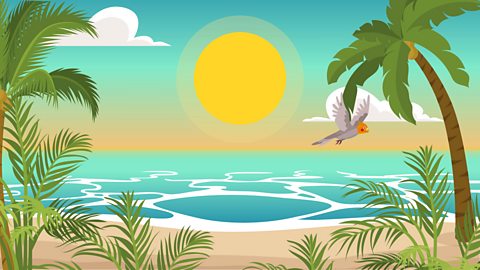
Mechanisms. video
This film explains what a mechanisms are, using examples of where they are used and how they make our lives easier.
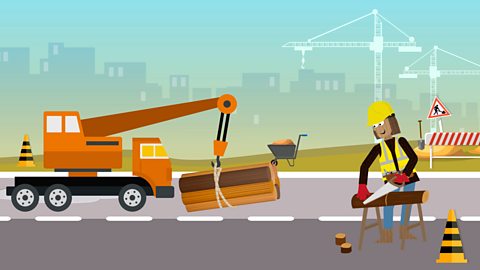
What should I do with my rubbish? video
This film explains the impact waste is having on our planet and how we can work to reduce our rubbish to make a difference.
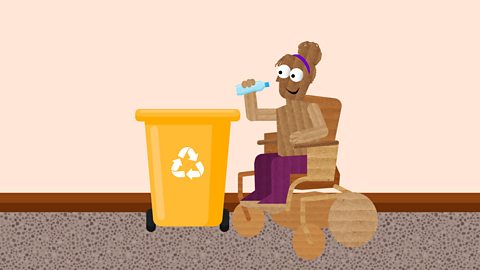
How to use scientific equipment. video
This film explains how we can use science equipment to develop our scientific abilities.
